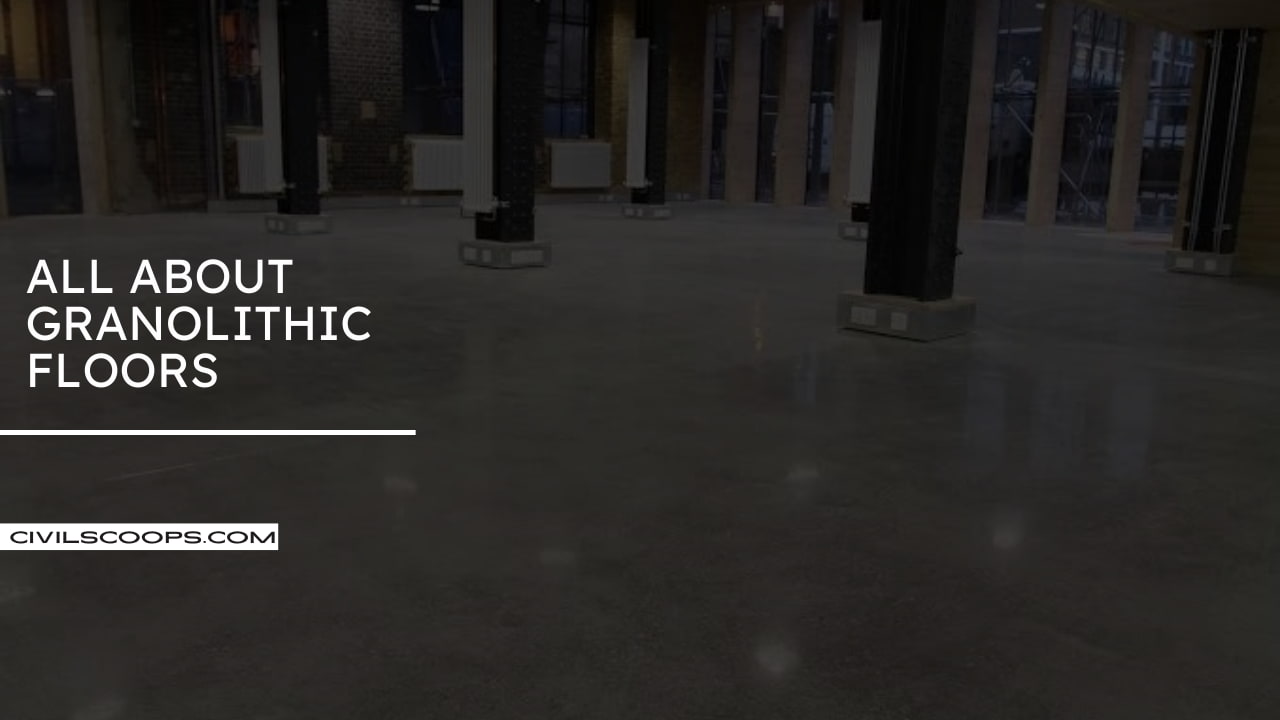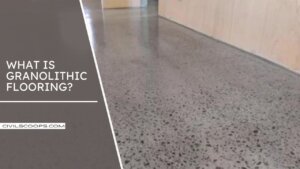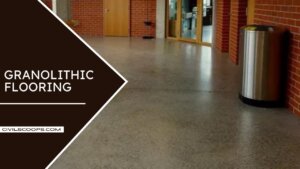What Is Granolithic Floors | Construction Method | Advantages аnd Disadvantage

Table of Contents
What Is Granolithic Flooring?

Granolithic is also known as granolithic paving and granolithic concrete is a type of construction material composed of cement and fine aggregates, such as granite or other resistant rocks.
It is generally used as a floor or paving. It has a similar appearance to concrete and is used to provide a durable surface, where texture and appearance are generally not important.
It is usually placed as a table. Tables are a type of floor placed on top of the structural element to provide a level surface on which the “worn floor” is placed.
A table can also be stripped, as it provides a durable surface. The aggregate mixed with cement can be of various sizes, shapes, and materials, depending on the required surface texture and its duration.
The aggregate is usually sieved so that the particles are approximately the same size, which helps to reduce air pockets in the material.
Generally, the mixture of aggregate to cement is 2.5 to 1 by volume. Granolithic floors or pavements can be problematic.
Granolithic Flooring

As it is made with a high cement content and requires a lot of water to mix, it can crack during drying. You can also let go of the material below.
Spilling material in layers is generally avoided. Cracks and undulations can be reduced by dividing the area to be covered into smaller sections and then pouring the material.
The granolithic floor offers a visually pleasing alternative to traditional concrete. The cement and aggregate mixture can be polished to a smooth finish and sealed with a durable surface finish.
The process creates a strong, dense surface, ideal for supporting extreme weights in factories and other industrial environments.
Although the granolithic floor can sometimes make the room cold, the infusion of texture, color, and built-in design can restore the warmth of this masonry floor.
Floor finishing plays an important role in the successful operation of a factory. The basic requirements for an ideal floor finish are that it is economical, wear-resistant, waterproof, sanitary, fire-resistant, skid-proof, inert, easy to maintain and clean.
There are two types of concrete floors used in industrial plants: monolithic and granolithic. Monolithic slabs produce good structural concrete, but the surface does not hold up well under severe wear.
On the other hand, it is a granolithic floor. A special granolithic covering for the “absorption process” floors has a high density, although it consists essentially of the same materials found in conventional concrete floors.
These floors obtain an extremely high wear resistance by the method used to set them. By using the absorption process and removing excess water, it is possible to obtain an unusual density and durability.
Construction Method of Granolithic Floors
For the construction of granolithic floors, first, the base concrete, which is cement with 2.5 cm thick and more than 10 to 15 cm of lean cement or lime concrete, is laid and consolidated before laying the cover.
It is necessary to finish the top surface of this base in order to create the necessary connection between the course of the base and the cover.
Granolithic concrete is prepared in a 1: 1: 2 ratio by mixing cement, fine aggregate and specially chosen aggregate and placing the covering layer on the prepared base.
The granolithic covering surface is allowed for 7 days and the surface can be rubbed to obtain a good surface. The surface is kept wet while being scrubbed.
Description of Granolithic Floor
The granolithic floor differs from the common concrete floor in that it uses an aggregate or mixture of materials, instead of a single uniform cement.
This style of floor mixes marble chips directly into the cement. The splinters of marble give the finished floor a distinct “mosaic” appearance.
The grinding of the finished floor brings this effect to varying degrees – as the top layer of concrete gives way to a smooth surface of aggregate in an opaque or shiny finish.
Construction of Granolithic Floor
The two main installation methods for granolithic floors are “monolithic” and “precast”. In the monolithic installation, workers pour the aggregate mixture into a slab, defining the desired floor area, using a measure of one part of marble chips to three parts of cement.
This mixture must remain for 48 hours before polishing. Later, workers add a layer of protective sealant, treating the surface with an acidic solution in advance to ensure that the sealant adheres properly.
These sealants can come in a variety of colors and finishes. In the prefabricated facility, workers simply use tiles made of granolithic material previously formed in a manufacturing facility, using a hydraulic press to securely fit them to the floor.
Advantages and Disadvantages of Granolithic Floor

Concrete-based floors, like granolithic ones, can withstand heavy loads, being a good option for warehouses, factories, and other workplaces that store, manufacture or use heavy objects.
The relatively inexpensive materials and labor required to appeal to the budget. Unfortunately, these types of floors can cause some problems, even if they solve others.
The tendency for sounds to bounce off the hard concrete surface, for example, leads to noise problems. The floor can also be difficult to clean and feel constantly cold.
Modern Amenities of Granolithic Floor
Certain modern innovations can now provide a degree of high-tech comfort to granolithic floors or other concrete floors.
Radiant concrete floors, for example, solve the problem of feeling cold all the time by installing heating elements just below the slab.
This touch can add warmth to a room or even serve as the main heating system for a large commercial facility that uses granolithic flooring throughout the facility.
[su_box title=”FAQ” style=”default” box_color=”#333333″ title_color=”#FFFFFF” radius=”3″ class=”” id=””]
What Is Granolithic Flooring?
Granolithic screed is a floor topping which is placed on to an existing hard base (usually a concrete slab), to form a durable top surface. It comprises hard aggregates, cement and sand which are blended with water and sometimes polymers to make a workable mix.
Advantages and Disadvantages of Granolithic Floor
Advantages and Disadvantages of Granolithic Floor
Concrete-based floors, like granolithic ones, can withstand heavy loads, being a good option for warehouses, factories, and other workplaces that store, manufacture or use heavy objects. The relatively inexpensive materials and labor required to appeal to the budget.
[/su_box]
[su_note note_color=”#F2F2F2 ” text_color=”#333333″ radius=”3″ class=”” id=””]
- What Is Shovel | Types of Shovels
- Mortar Vs Cement | Types of Cement | Types of Mortar
- All About Pier and Pile | Difference Between Pier and Pile | What Is Pier | What Is Pile
- All About Fish Ladder | What Is Fish Ladder | Types of Fish Ladder | Fish Ladders in Dams
- All About Rat Trap Bond | What Is Rat Trap Bond | How to Use | Advantage & Disadvantage of Rat Trap Bond
[/su_note]
Originally posted 2022-06-24 17:54:20.
